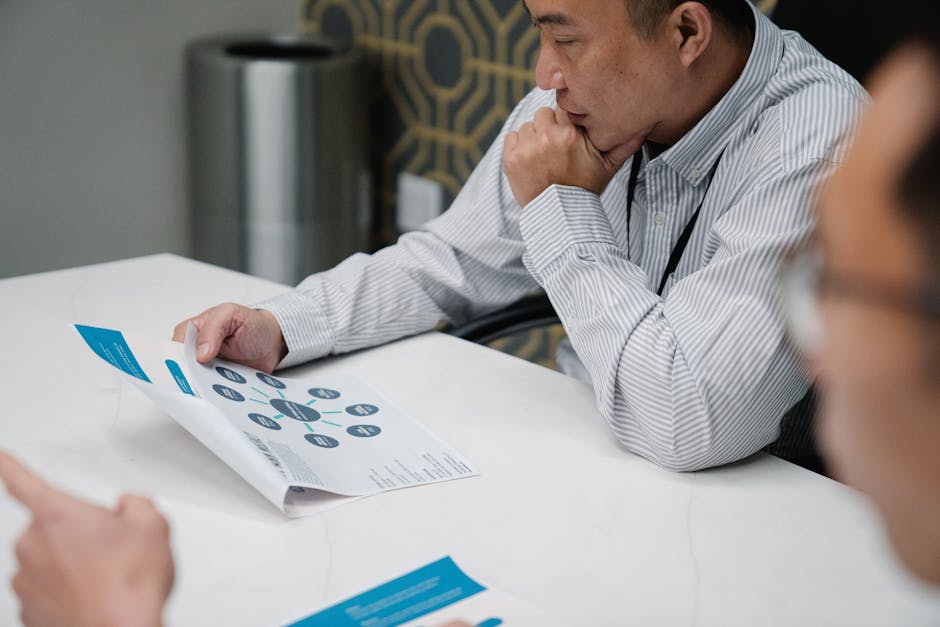Mastering the Art of Body Language: FBI Techniques for Effective Meetings
“Discover how to leverage FBI body language techniques to improve your meeting dynamics and interpersonal communication. This article explores key nonverbal cues, from the 'neck touch' to the 'steeple,' helping you decipher colleagues' true feelings and intentions for more productive workplace interactions. ”

Mastering the Art of Body Language: FBI Techniques for Effective Meetings
In today's fast-paced corporate world, effective communication goes beyond mere words. Understanding and interpreting body language can be a game-changer in workplace interactions, especially during meetings. By harnessing techniques used by FBI agents, you can gain valuable insights into your colleagues' thoughts and feelings, leading to more productive and harmonious work environments.

The Power of Nonverbal Communication
Body language accounts for a significant portion of our communication, often revealing more than what is said aloud. By learning to read these subtle cues, you can enhance your ability to understand and respond to others effectively.
Decoding Positive Signals
When your colleagues are engaged and supportive, they may exhibit the following behaviors:
- Mirroring: Unconsciously imitating your posture or gestures, indicating rapport.
- Leaning In: Showing interest and attentiveness to the discussion.
- Nodding: Agreeing with or acknowledging your points.
- Authentic Smiling: Displaying genuine pleasure or approval.
- Consistent Eye Contact: Demonstrating focus and engagement.
- Open Posture: Arms and hands uncrossed, signaling receptiveness.
Recognizing Discomfort or Negativity
Be aware of these signs that may indicate discomfort or disagreement:
- Lip Biting: Often a sign of stress or anxiety.
- Neck Touching: A self-soothing gesture that can signal discomfort.
- Hand Wringing: Indicating nervousness or uncertainty.
- Furrowed Brow: Suggesting confusion or disagreement.
- Nose Crinkling: Potentially signaling displeasure or disgust.
- Slouching: May indicate disengagement or lack of confidence.

FBI Body Language Techniques for Meeting Success
Former FBI agent Joe Navarro has shared valuable insights on reading body language. Here are some key techniques you can apply in your next meeting:
The 'Steeple' Gesture
When someone 'steeples' their hands—touching fingertips together in a pyramid shape—it often indicates confidence and authority. This gesture is commonly seen when someone feels secure in their position or is about to make an important point.
The 'Neck Touch'
Touching or rubbing the neck is a pacifying behavior that often signals discomfort or disagreement. If you notice a colleague repeatedly touching their neck during a discussion, they may be feeling stressed or uncertain about the topic at hand.
Eye Movement and Engagement
Pay attention to eye movement and contact. Consistent, natural eye contact suggests engagement and honesty, while frequent looking away or rapid blinking might indicate discomfort or potential deception.
Microexpressions
These fleeting facial expressions can reveal true emotions before a person has time to mask them. Learning to spot microexpressions can provide valuable insights into someone's genuine reactions.

Applying Body Language Insights in the Workplace
Understanding body language can significantly improve your workplace interactions:
-
Enhance Communication: By reading nonverbal cues, you can adjust your approach to ensure your message is well-received.
-
Build Better Relationships: Recognizing and responding to others' emotional states can help foster stronger professional connections.
-
Improve Negotiation Skills: Picking up on subtle cues can give you an edge in negotiations and conflict resolution.
-
Boost Team Dynamics: Understanding team members' nonverbal signals can help create a more cohesive and productive work environment.
-
Identify Potential Issues: Early detection of discomfort or disagreement through body language can help address problems before they escalate.
Remember, while these techniques can be powerful, they should be used ethically and in conjunction with verbal communication. It's also important to consider cultural differences and individual variations in body language interpretation.
Conclusion
Mastering the art of reading body language can transform your professional interactions, making you a more effective communicator and leader. By incorporating these FBI-inspired techniques into your meeting strategy, you'll be better equipped to navigate the complex landscape of workplace dynamics.
Whether you're conducting a conference room setup or engaging in [collaborative creativity, your newfound body language skills will serve as a valuable tool in your professional arsenal. Remember, the key to success lies not just in what is said, but in the silent language of the body.